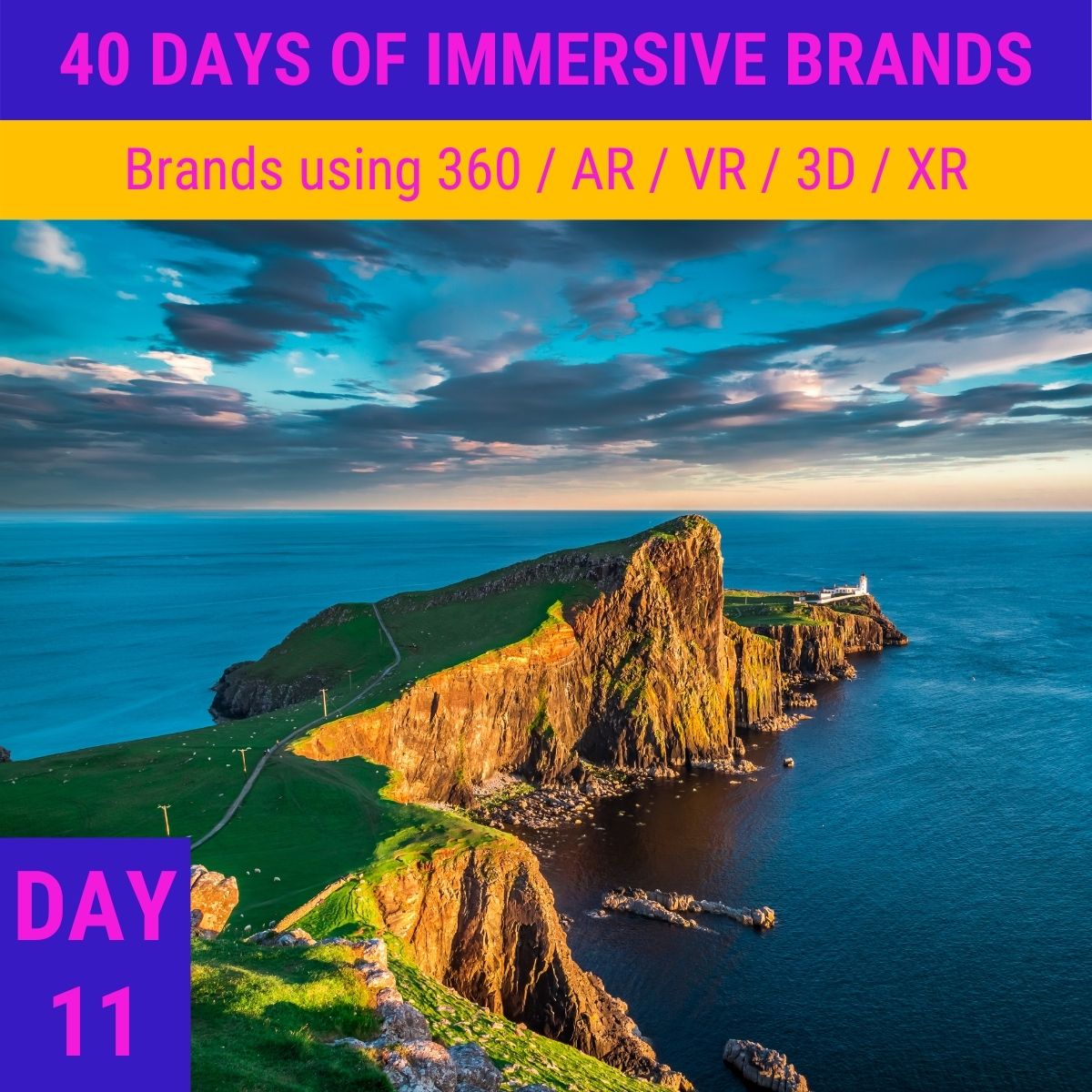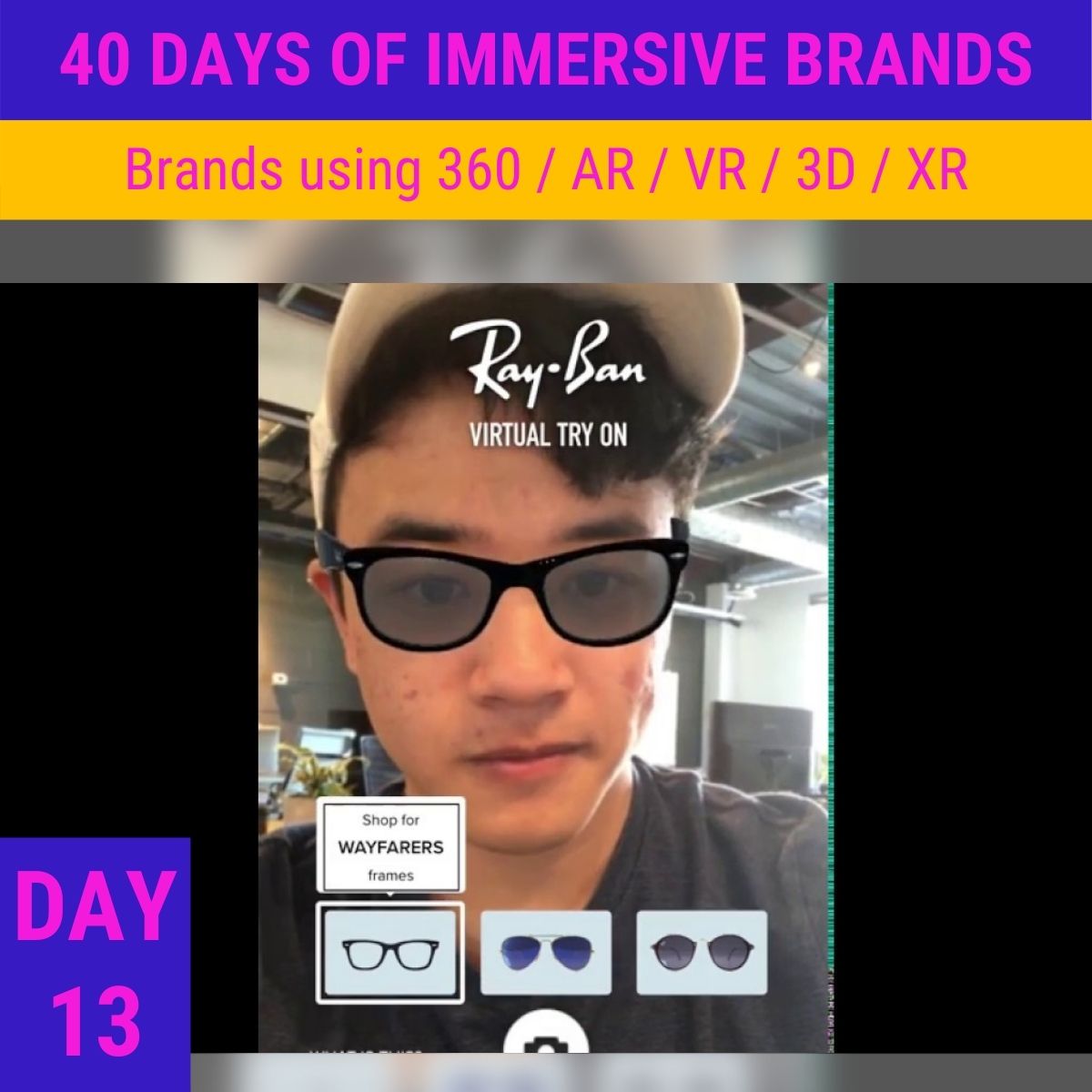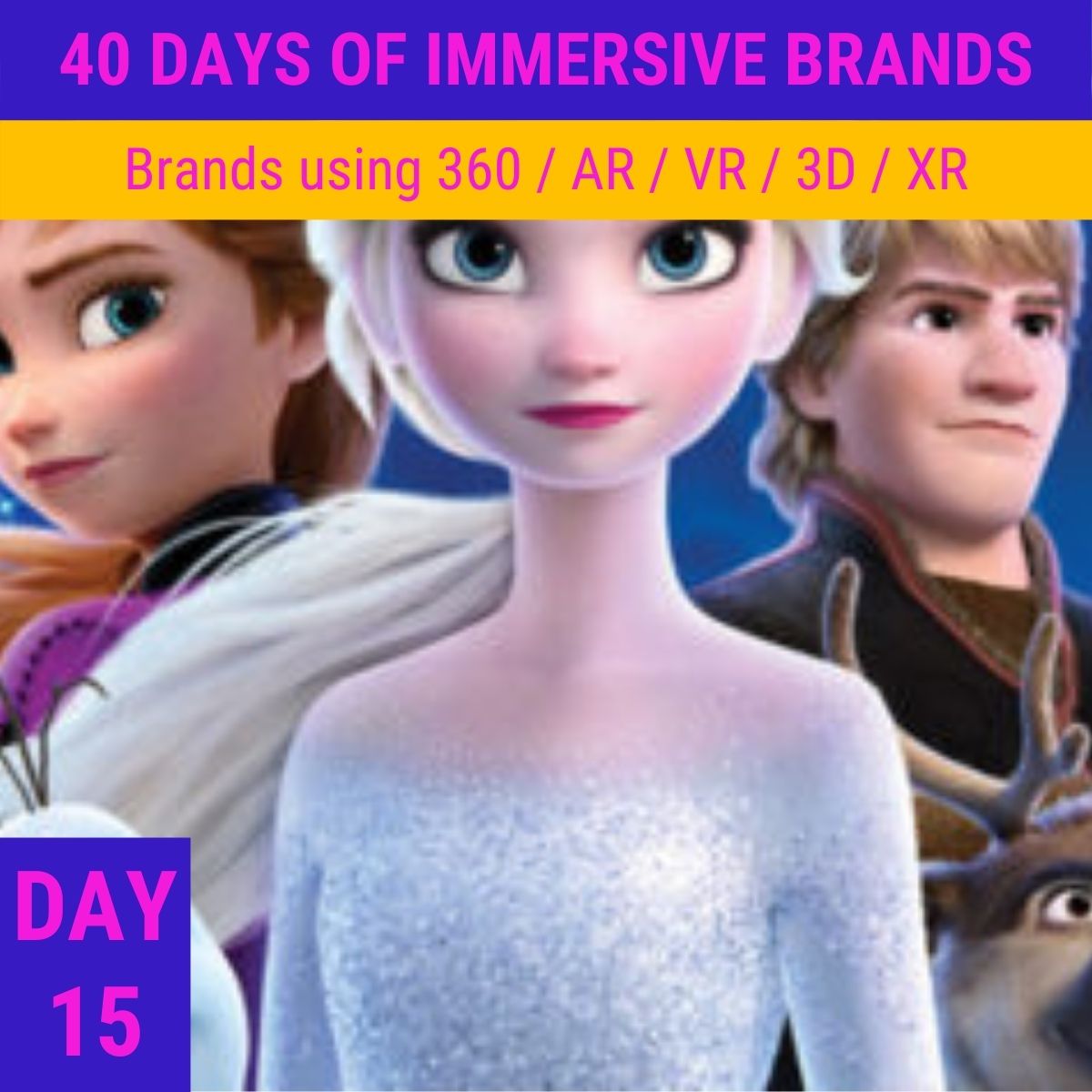If you’re in marketing or advertising, you strive to have consumers spend time with your brand. The more time a consumer spends engaging with a brand their affinity for said brand can grow. As brand affinity grows, so does the likelihood that the consumer will make a purchase. Immersive media like 360 degree images and video (aka 360VR), augmented reality (AR), 3D models, virtual reality (VR), holograms and XR are new tools that enable marketers to increase and maximize the valuable time that consumers spend engaging with them.
In our our 40 DAYS of IMMERSIVE BRANDS feature, Days 11-15, we salute innovative travel brands, entertainment properties and eyewear brands that are truly pushing the envelope and innovating by using immersive media to better connect and engage with consumers.
So without further delay, hear are Days 11-15.
DAY 11: #MUSTSEASCOTLAND
The tourism industry is no stranger to immersive media like 360 degree images and videos but it’s always refreshing to see a travel brand embrace the tech. As part of its #MustSeaScotland campaign, Sail Scotland launched a series of 360 degree videos pre-Covid to drum up tourism to explore the country’s unique coastline, heritage and wildlife.
 They kicked off release of the videos at a boat show. If you want to check out the 360 video (aka virtual reality video) series, you can check it out here. While this is definitely a step in the right direction, Sail Scotland could take a lesson from Jameson and take their 360 degree content and use it to run immersive deep display ads to drum up tourism to the beautiful country.
They kicked off release of the videos at a boat show. If you want to check out the 360 video (aka virtual reality video) series, you can check it out here. While this is definitely a step in the right direction, Sail Scotland could take a lesson from Jameson and take their 360 degree content and use it to run immersive deep display ads to drum up tourism to the beautiful country.
DAY 12: NETFLIX #DISJOINTED
This is a great example of how easy it is to create a highly effective immersive ad campaign when you don’t have a single piece of immersive media creative! The creative team at Advrtas was able to take ordinary 2D images (simple pngs and jpegs) and create a highly engaging immersive ad experience that drove dwell time (time spent with brand) and delivered high return on ad spend.

Even better was the ability to track exactly how people were engaging with the deep display ad unit. Because of the nature of Advrtas’ patented technology, they were able to track all consumer behavior within the ad unit (even if the consumer didn’t click on a thing). They were able to identify what was driving more time spent within the ad unit and what was driving conversions. They were also able to identify fraud and bot activity further driving better return on ad spend (ROAS). It was an excellent test case for proving the power of immersive deep display ads.
DAY 13: RayBan SUNGALSSES
We have recently snatched up Web AR startup Vertabrae to thank for one of the earliest AR virtual try-on ads. Eyeware brand RayBan took a test drive of the tech to run a campaign where users could try-on sunglasses virtually using their phone without having to download an app. Consumers who came across the ad could click on it and then be directed to provide access to the camera so that they could try on a pair shades. Since then we’ve seen many other brands employ this technique and the use has only accelerated since the pandemic. 
DAY 14: ALEXANDER McQUEEN
Just before the world turned upside down due to the recent pandemic, an innovative team at Alexander McQueen decided to embrace the immersive media technology AR (augmented reality) at a pop-up experience in Dubai. Warning, if you’re not a fan of bugs this might not be the best marketing promotion for you, but the artistry is beautiful and the immersive experience gets me to proactively engage with the brand (the precious dwell time!). Something every marketer strives for.

DAY 15: FROZEN 2
While it may not have been as highly publicized as the much-anticipated feature film and likely got lost in the frenzy of when the pandemic initially started to spread, Disney sent a signal to the world that their animation arm is willing to dabble with VR using one of its most valuable franchises. The Frozen 2 inspired VR short film titled Myth: A Frozen Tale, headed to Sundance in winter 2020, and was featured as a special attraction with limited release when it premiered alongside the theatrical film in November 2019.

Those who were lucky enough to experience the virtual reality film expressed their delight and wished the studio would release it globally. When we’ll see a full-length VR feature film by Disney is anyone’s guess, but you can be certain they’ll continue to use immersive media in fun and unique ways to grow their franchises. What little girl or boy wouldn’t want find themselves in the middle of their favorite Disney film!
That’s it for this week’s edition of “40 Days of Immersive Brands”. See past Days of Immersive Brands: